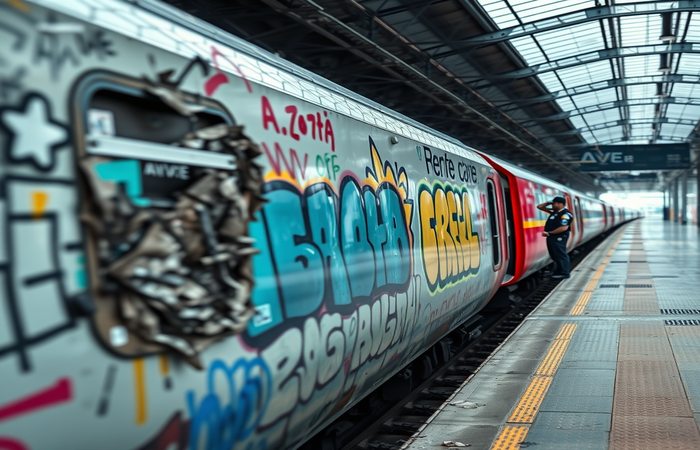Dhaka Metro Rail: A New Era for Urban Transit

The Inauguration of Dhaka’s Metro Rail: A Milestone in Urban Transportation
The recent launch of Dhaka’s first metro rail line, Line 6, marks a significant achievement in Bangladesh’s ongoing efforts to address the crippling traffic congestion plaguing its capital city. This 20km elevated network, funded largely by Japanese Official Development Assistance (ODA), represents a substantial investment in modern, efficient public transportation. The project, completed after six years of construction, serves 16 stations, initially connecting northern Dhaka to key government areas and hospitals. This infrastructure development goes beyond simply adding another transit option; it signifies a strategic shift towards sustainable urban planning and a commitment to improving the quality of life for Dhaka’s residents. This article will explore the significance of this project, analyzing its engineering challenges, economic implications, and its potential impact on Dhaka’s future urban development. Furthermore, we will examine the long-term vision for Dhaka’s metro system and its role in shaping a more sustainable and efficient urban landscape.
Engineering Marvels and Construction Challenges
Constructing an elevated metro rail system in a densely populated city like Dhaka presented numerous engineering hurdles. The project required careful planning and execution to minimize disruption to existing infrastructure and daily life. Considerations included the selection of appropriate construction techniques to manage the impact on traffic flow, the design of elevated structures to withstand the region’s climatic conditions, and the integration of the system with existing road networks. The successful completion of Line 6 demonstrates the capacity of Bangladeshi engineers and contractors to manage complex infrastructure projects, working in collaboration with international experts and utilizing advanced technologies. The use of elevated lines, rather than underground, was a crucial decision balancing cost, speed of construction, and minimal disruption to already congested roads.
Economic Impact and Funding
The substantial investment from Japan, through ODA, highlights the international cooperation crucial for developing nations to undertake large-scale infrastructure projects. This funding not only provided the capital necessary for construction but also facilitated technology transfer and skills development within Bangladesh. Beyond the immediate construction jobs, the metro rail promises to stimulate economic activity through increased accessibility to employment centers, improved productivity, and reduced transportation costs for commuters. The economic benefits of reducing traffic congestion – less fuel consumption, decreased time wasted in traffic, increased business efficiency – will have a significant positive impact on Dhaka’s overall economy.
Social Impact and Urban Development
The metro rail’s impact extends beyond economic benefits. The dedicated carriage for women enhances safety and provides a more comfortable commuting experience for a significant segment of the population. Improved connectivity facilitates access to healthcare, education, and employment opportunities for residents across the city, reducing socio-economic disparities. By providing a reliable and efficient public transportation system, the metro rail encourages a shift away from private vehicles, contributing to a reduction in air pollution and a more sustainable urban environment. The planned expansion to further sections of the city will be vital in realizing this positive social impact on a wider scale. The system’s integration with other modes of transport, such as buses and possibly future light rail systems, will be essential to creating a fully integrated and comprehensive public transport network.
Future Expansion and Integration
The launch of Line 6 is merely the first phase of a much larger plan to create a comprehensive metro rail network for Dhaka. The planned expansion to Agargaon-Motijheel and Motijheel-Kamalapur sections underscores the government’s commitment to modernizing the city’s transportation infrastructure. The successful implementation of this multi-phased project requires meticulous planning, consistent funding, and ongoing collaboration between stakeholders. Successful future phases will involve similar engineering challenges, further economic investment, and continued focus on delivering positive social impacts to the citizens of Dhaka. The ultimate success of Dhaka’s metro system will depend on the ongoing commitment to efficient operation, maintenance, and seamless integration with other transportation systems, paving the way for a more sustainable and interconnected future for the city.
Conclusions
The inauguration of Dhaka’s first metro rail line represents a transformative moment for the city, marking a significant step towards addressing its chronic traffic congestion and enhancing its overall urban development. This achievement, made possible through substantial Japanese ODA funding and the collaborative efforts of Bangladeshi and international engineers, highlights the potential of large-scale infrastructure projects to drive economic growth, improve social equity, and promote sustainable urban living. The successful completion of Line 6 demonstrates the capacity of Bangladesh to undertake complex engineering projects and manage the logistical challenges associated with constructing a metro system in a densely populated environment. The economic benefits, from reduced transportation costs to increased productivity, will positively impact Dhaka’s economy, while the social benefits, including improved access to essential services and enhanced safety for women commuters, are equally significant. The planned expansion of the metro network signifies the government’s long-term commitment to upgrading its public transport infrastructure. However, the long-term success hinges on sustained investment, efficient operational management, and the continued integration of the metro system with other forms of public transport to create a truly holistic and interconnected network. The lessons learned from this first phase will be invaluable in navigating the challenges of subsequent expansion phases, ensuring that Dhaka’s metro system ultimately becomes a model of sustainable urban development for other megacities facing similar infrastructural challenges. The project serves as a testament to the power of international cooperation and the transformative potential of well-planned, strategically implemented public transportation systems in shaping the future of rapidly growing urban centers.


